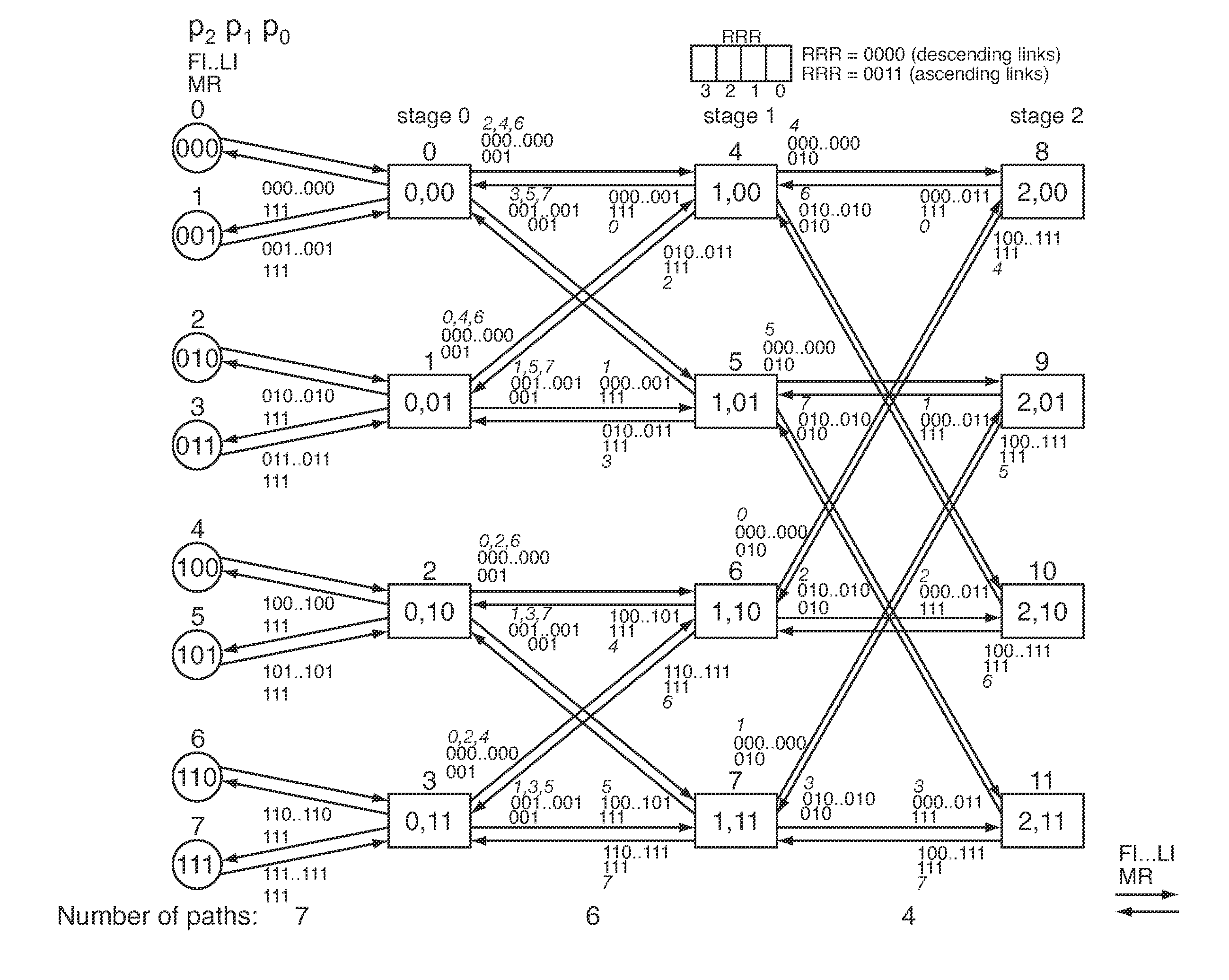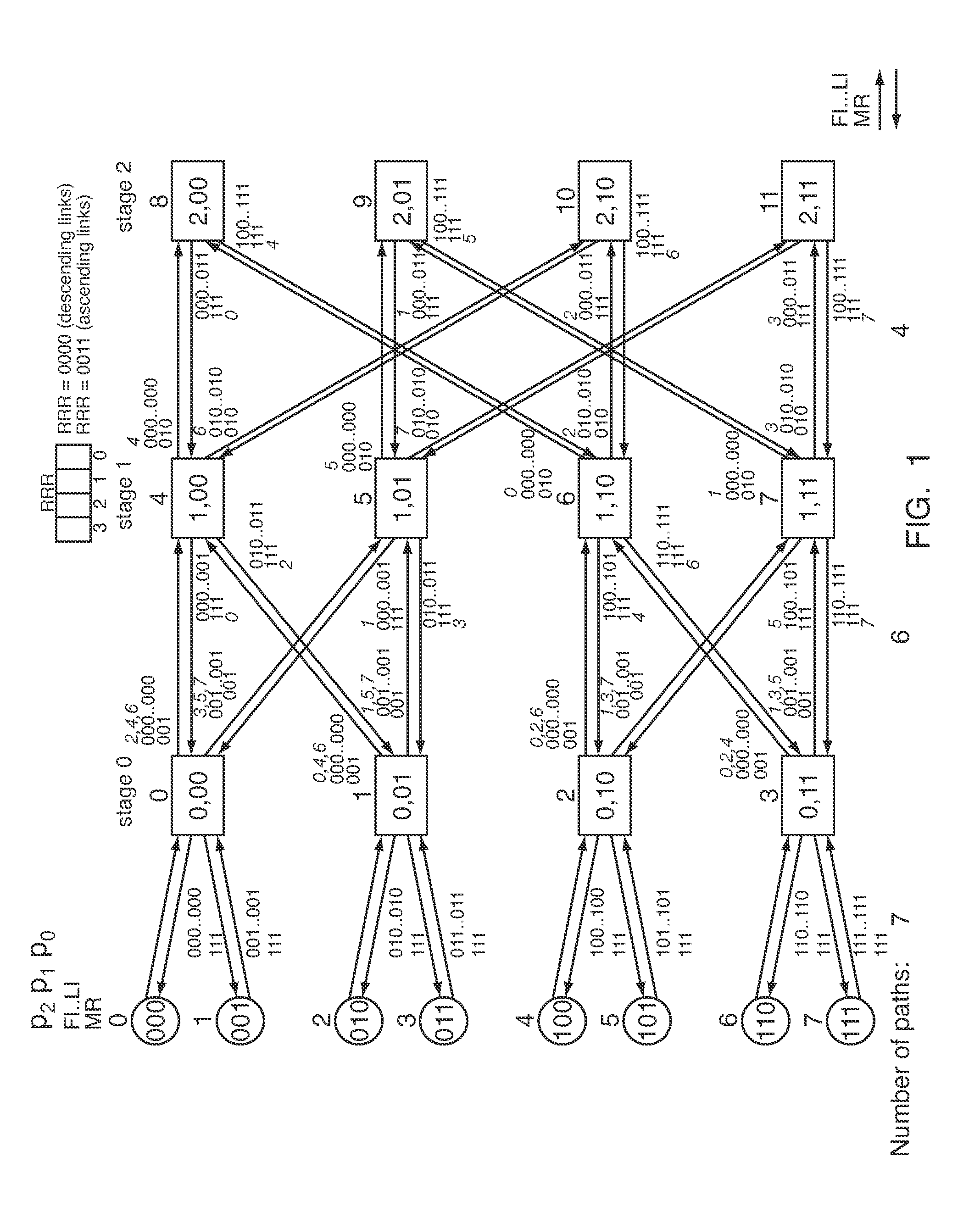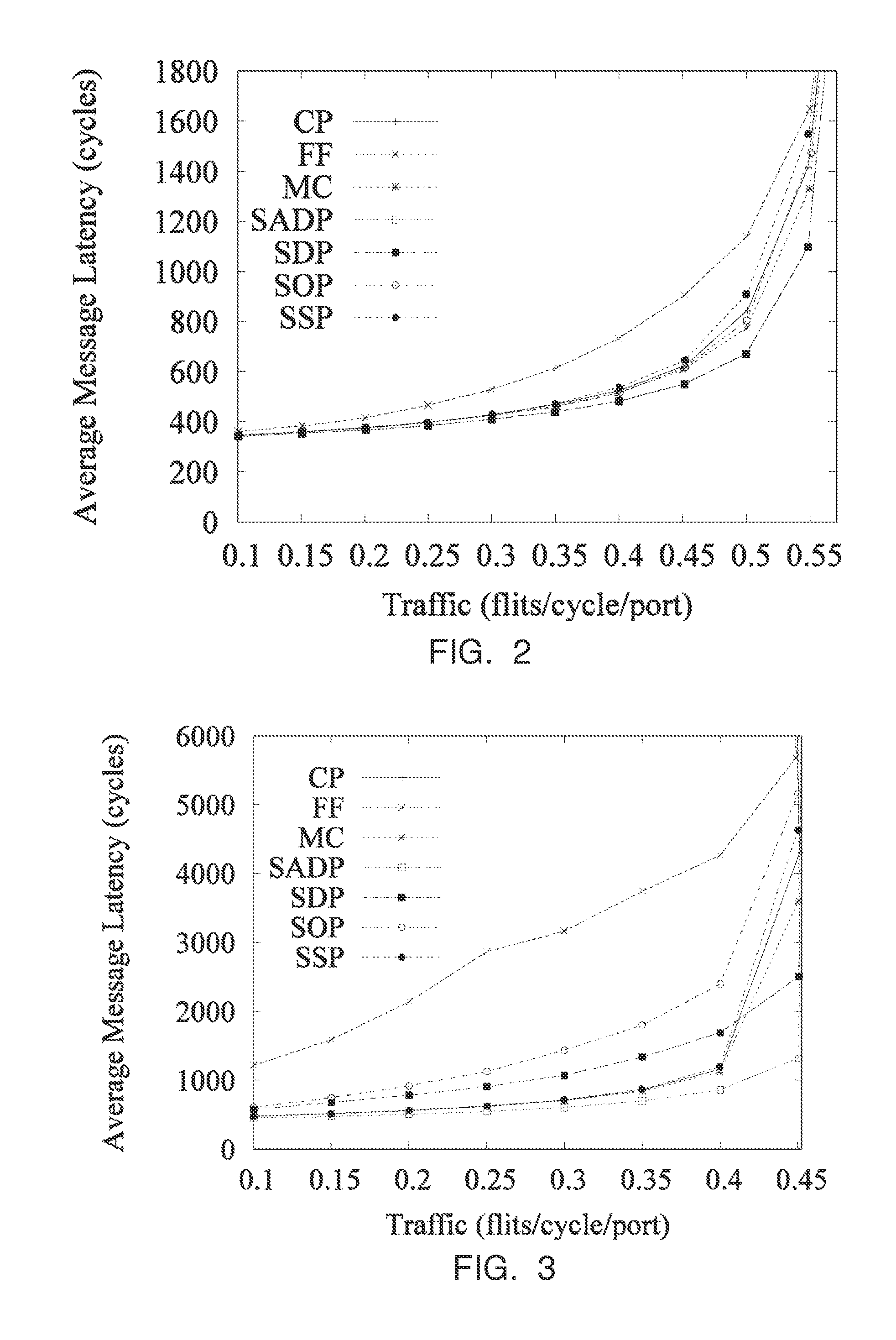Method and switch for routing data packets in interconnection networks
a technology of routing data packets and interconnection networks, applied in data switching networks, digital transmission, electrical devices, etc., can solve the problems of inability to accept some applications, poor balancing of traffic among network links by deterministic routing algorithms, and complex routing, etc., to achieve easy implementation, low cost, and efficient routing
- Summary
- Abstract
- Description
- Claims
- Application Information
AI Technical Summary
Benefits of technology
Problems solved by technology
Method used
Image
Examples
Embodiment Construction
[0044]In the light of FIG. 1, it is possible to describe two alternative embodiments of the invention: one disclosed here firstly deals with a deterministic routing method for fat-trees and a second one refers to a selection function which is here called Stage And Destination Priority (SADP) selection function for adaptive routing.
[0045]An efficient mechanism to reduce the multiple ascending paths in a fat-tree into a single one for each source-destination pair is proposed. The path reduction is done by balancing network link utilization: All the links of a given stage must be used by a similar number of paths. A simple idea is to divide the adaptive up interval of a switch into a number (k) of sub-intervals with the same size in order to get balance in the ascending phase, but this does not guarantee at all that the descending links are well balanced. The deterministic routing method for fat-trees defined according to the object of this invention allows to balance both routing phas...
PUM
 Login to View More
Login to View More Abstract
Description
Claims
Application Information
 Login to View More
Login to View More - R&D
- Intellectual Property
- Life Sciences
- Materials
- Tech Scout
- Unparalleled Data Quality
- Higher Quality Content
- 60% Fewer Hallucinations
Browse by: Latest US Patents, China's latest patents, Technical Efficacy Thesaurus, Application Domain, Technology Topic, Popular Technical Reports.
© 2025 PatSnap. All rights reserved.Legal|Privacy policy|Modern Slavery Act Transparency Statement|Sitemap|About US| Contact US: help@patsnap.com



